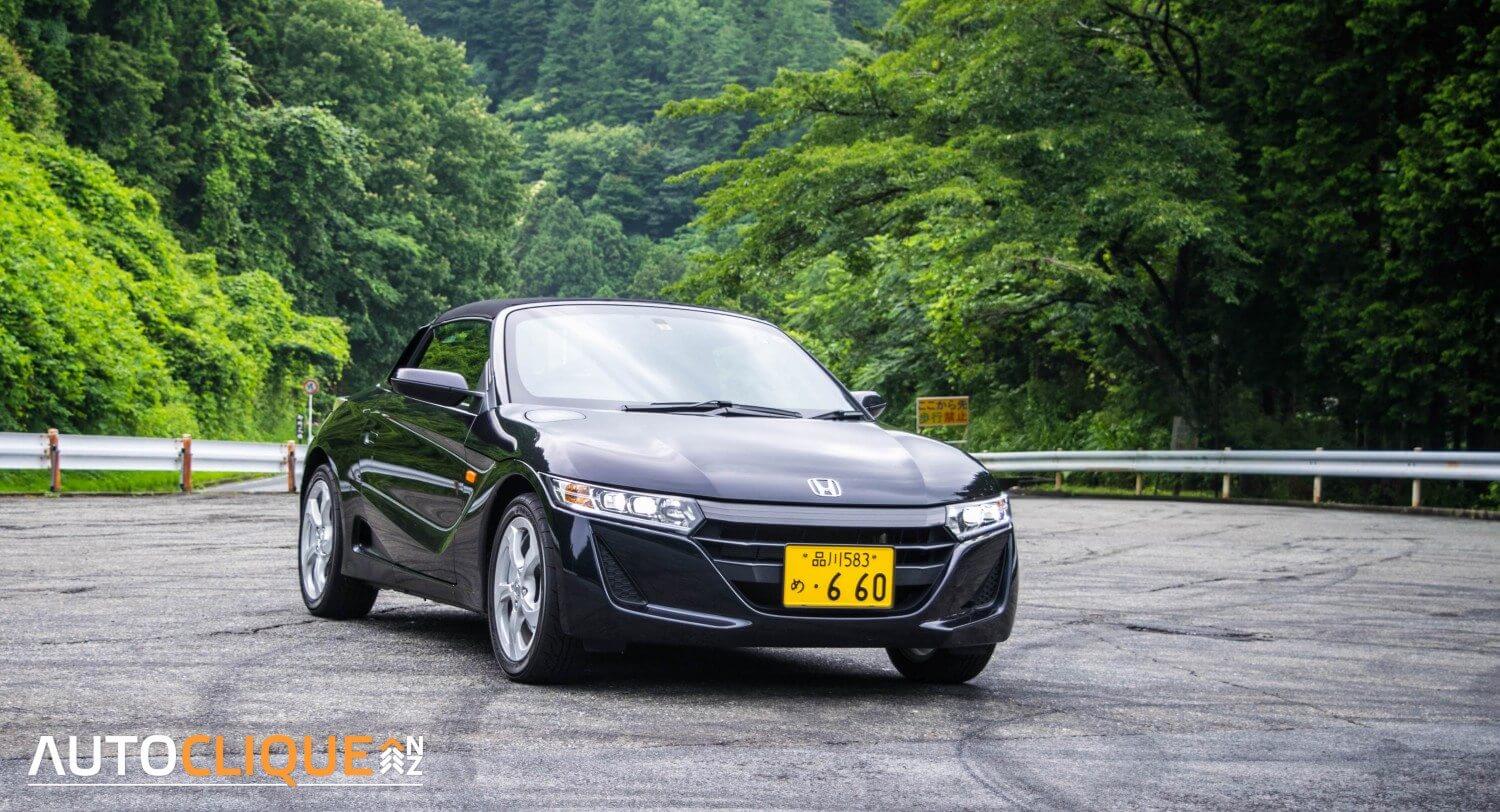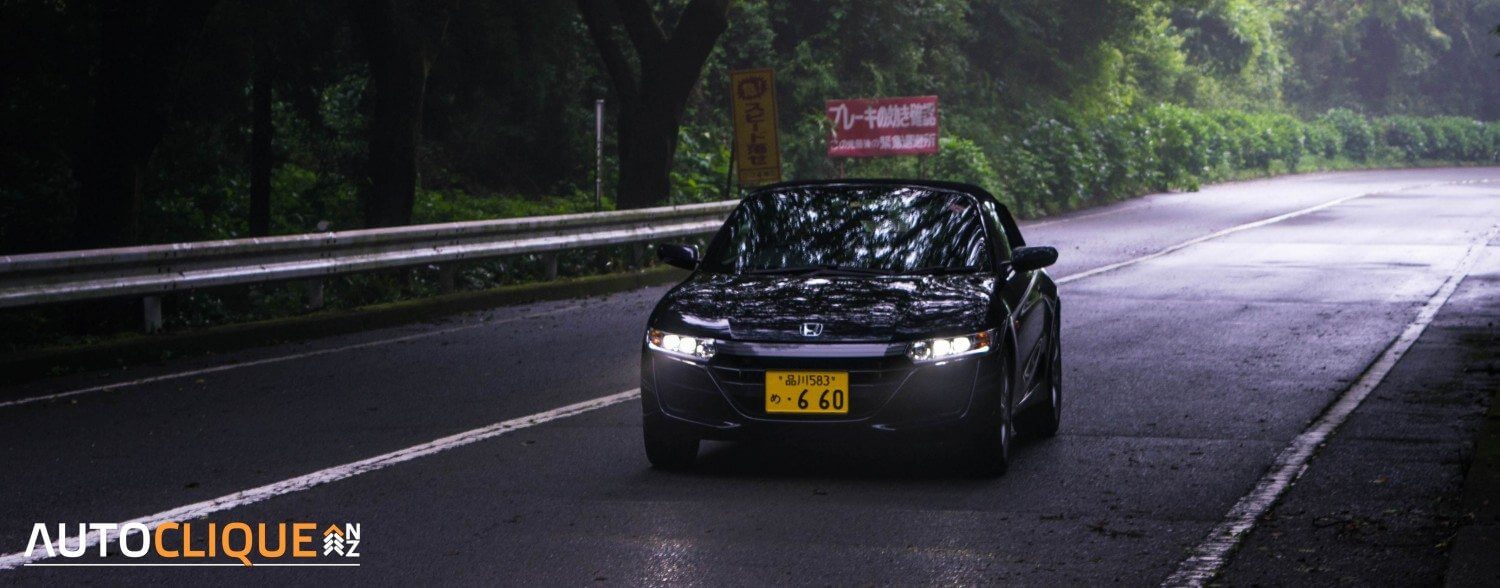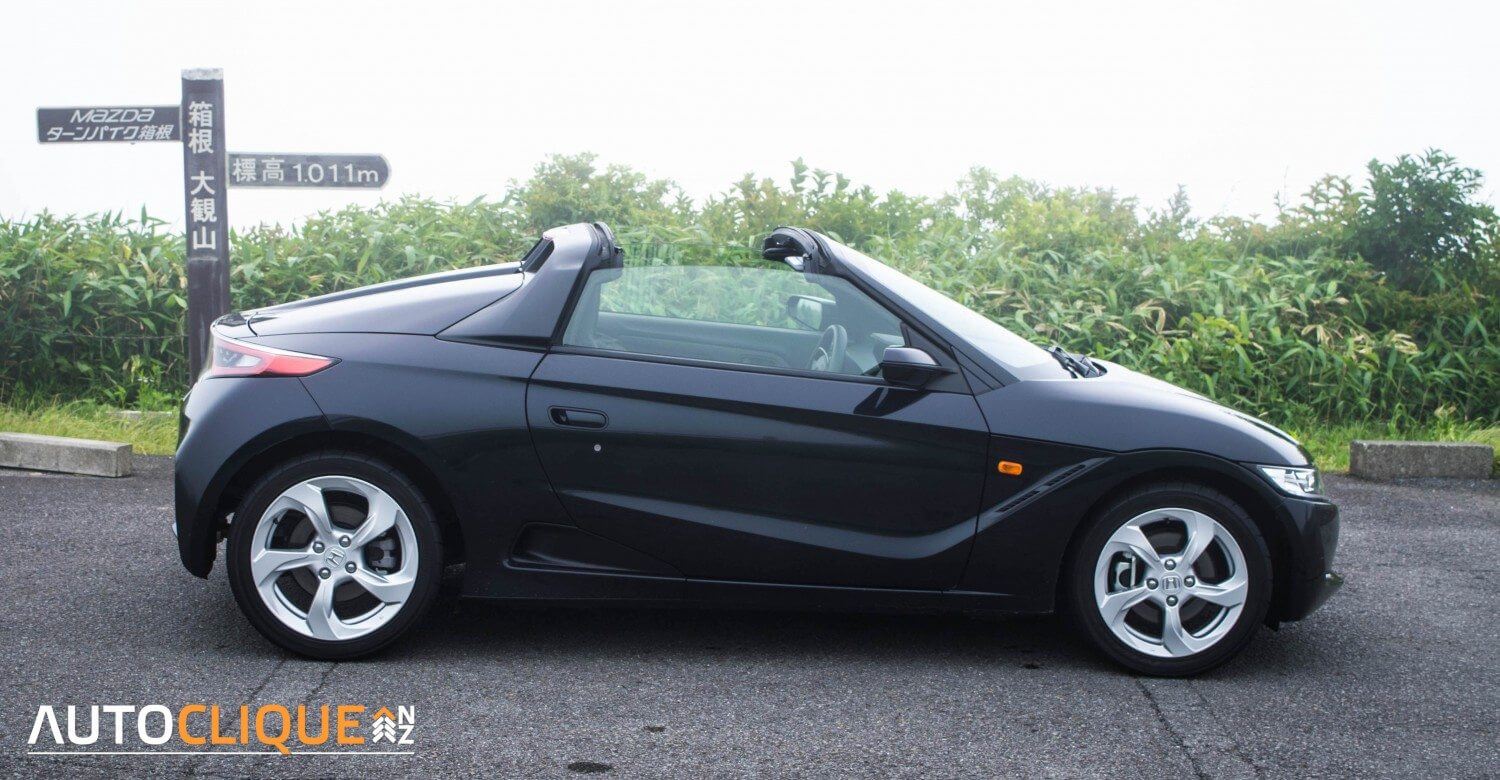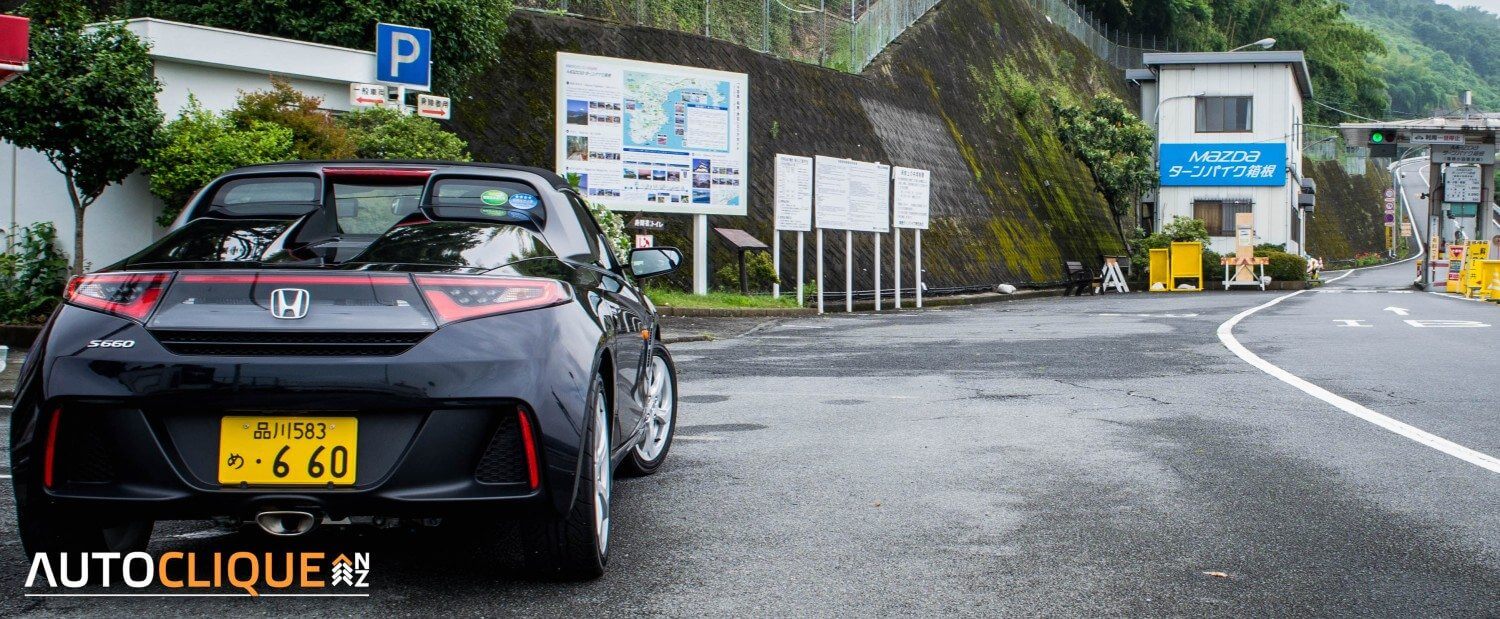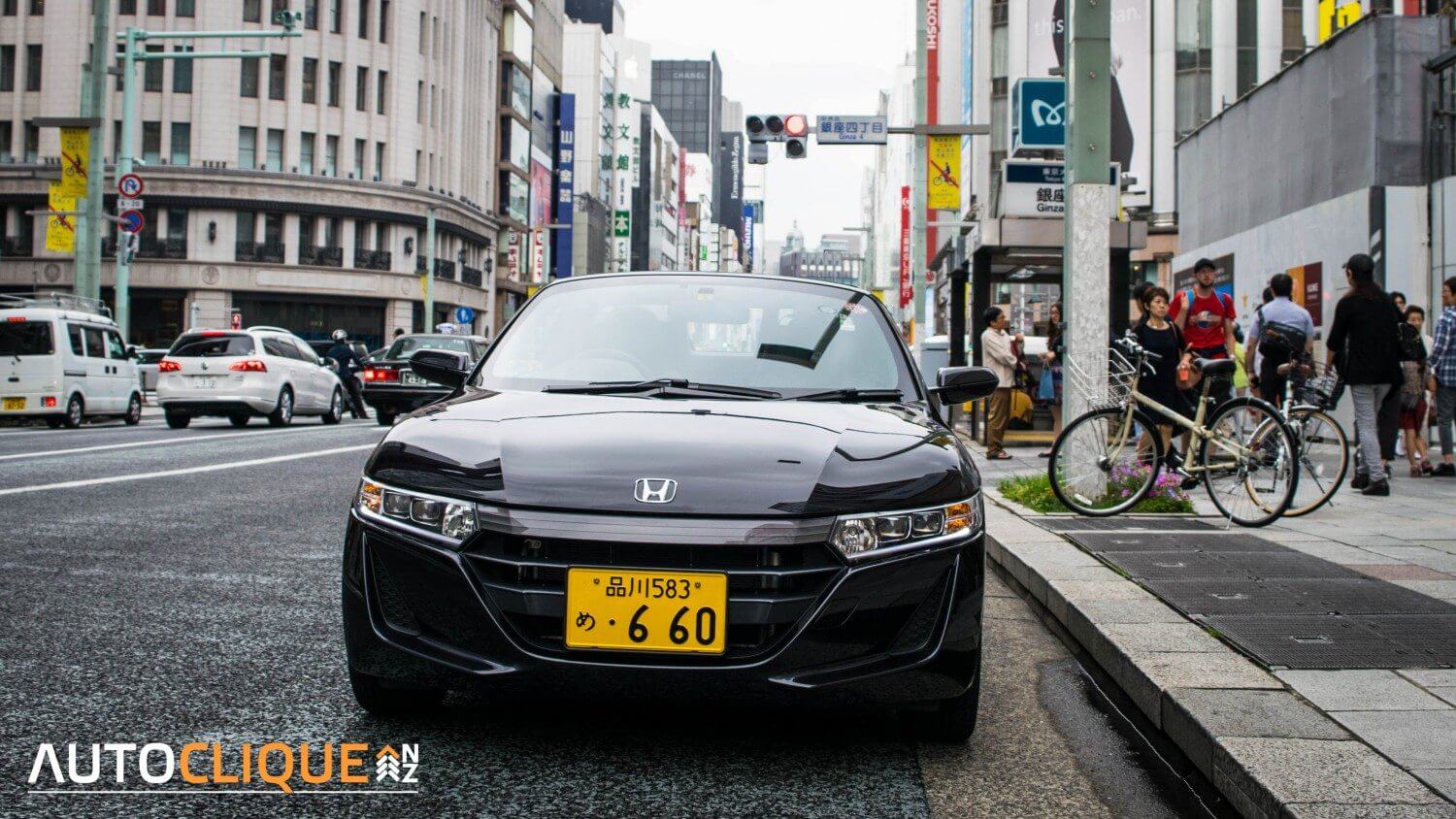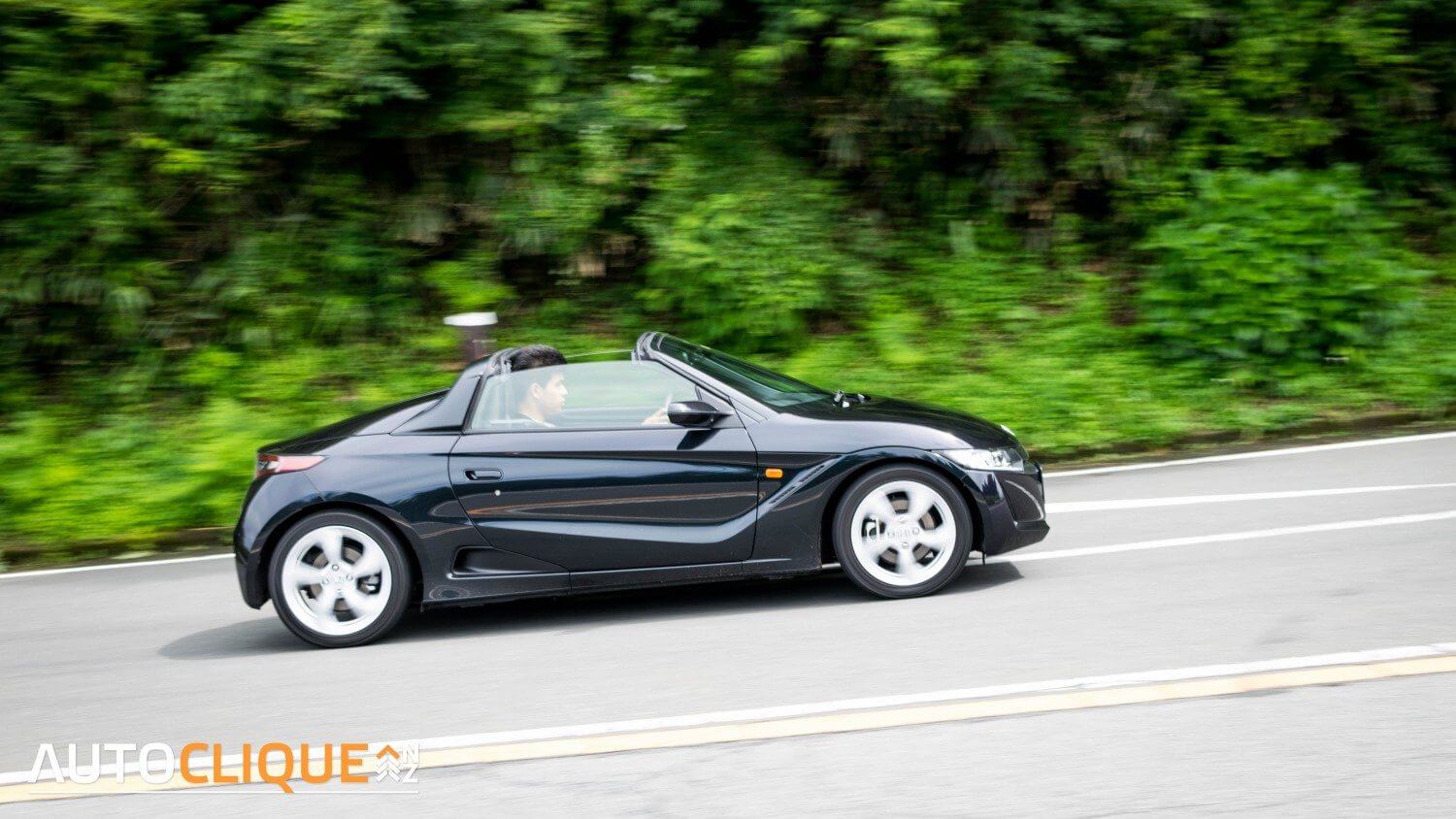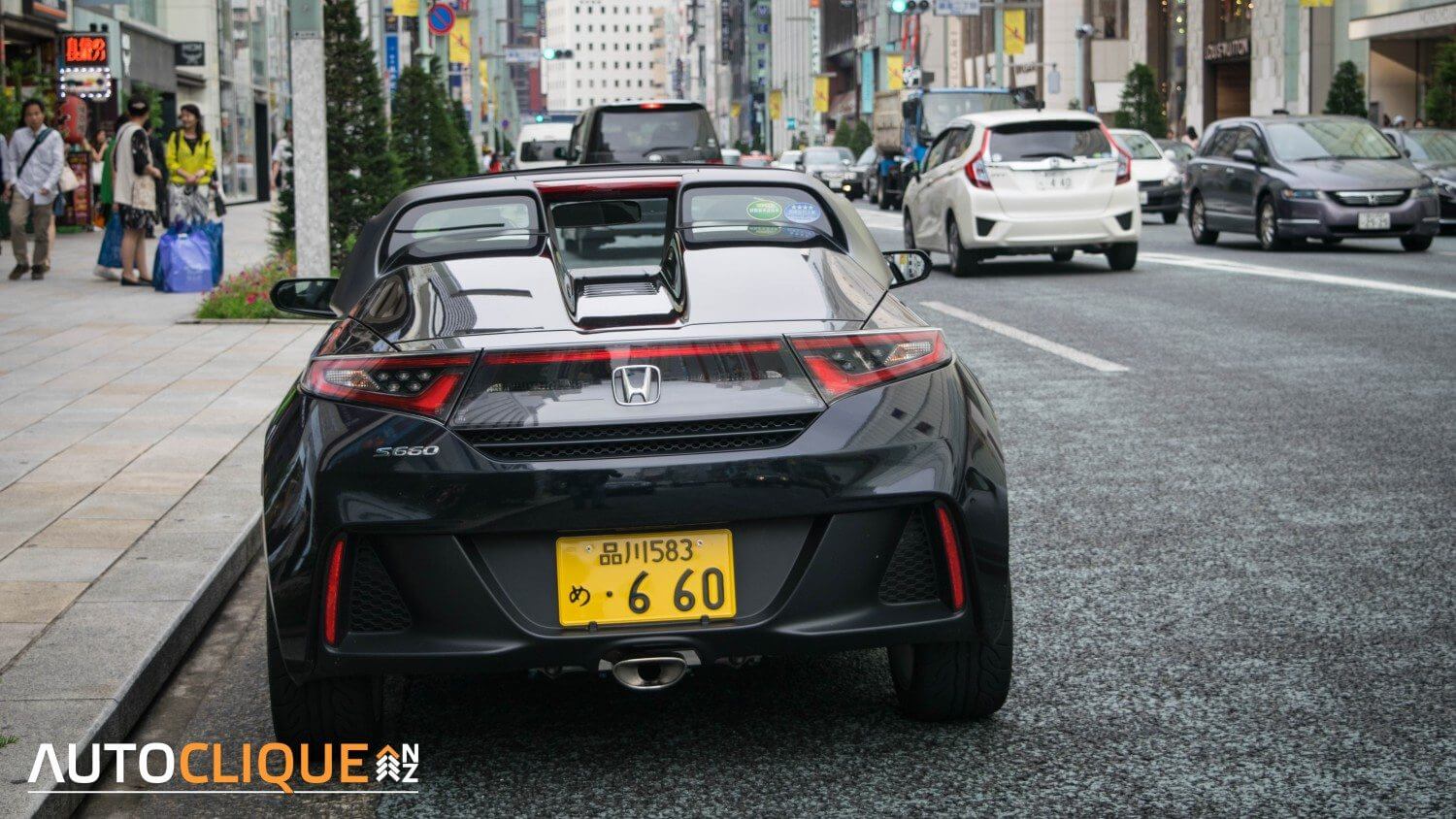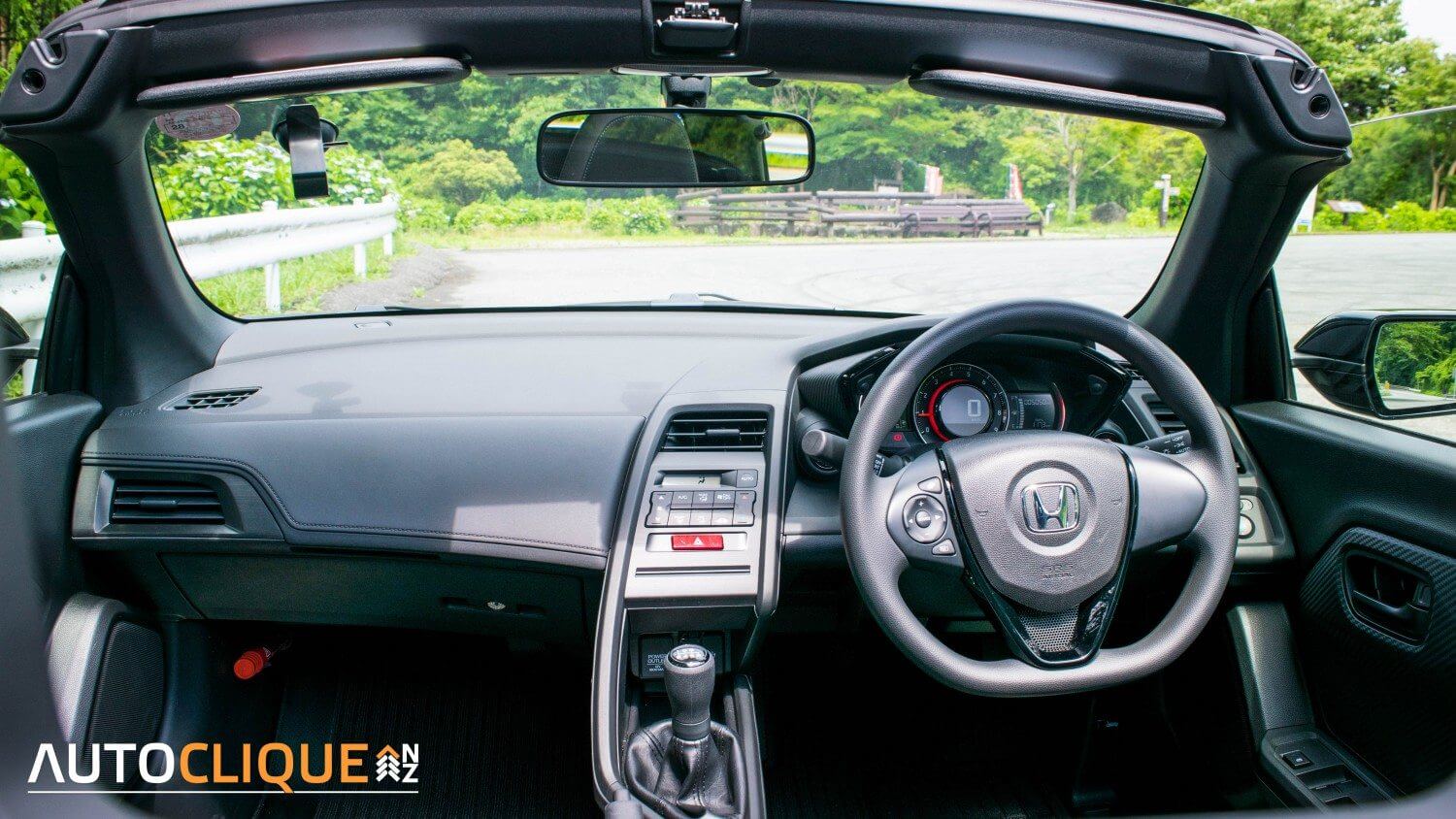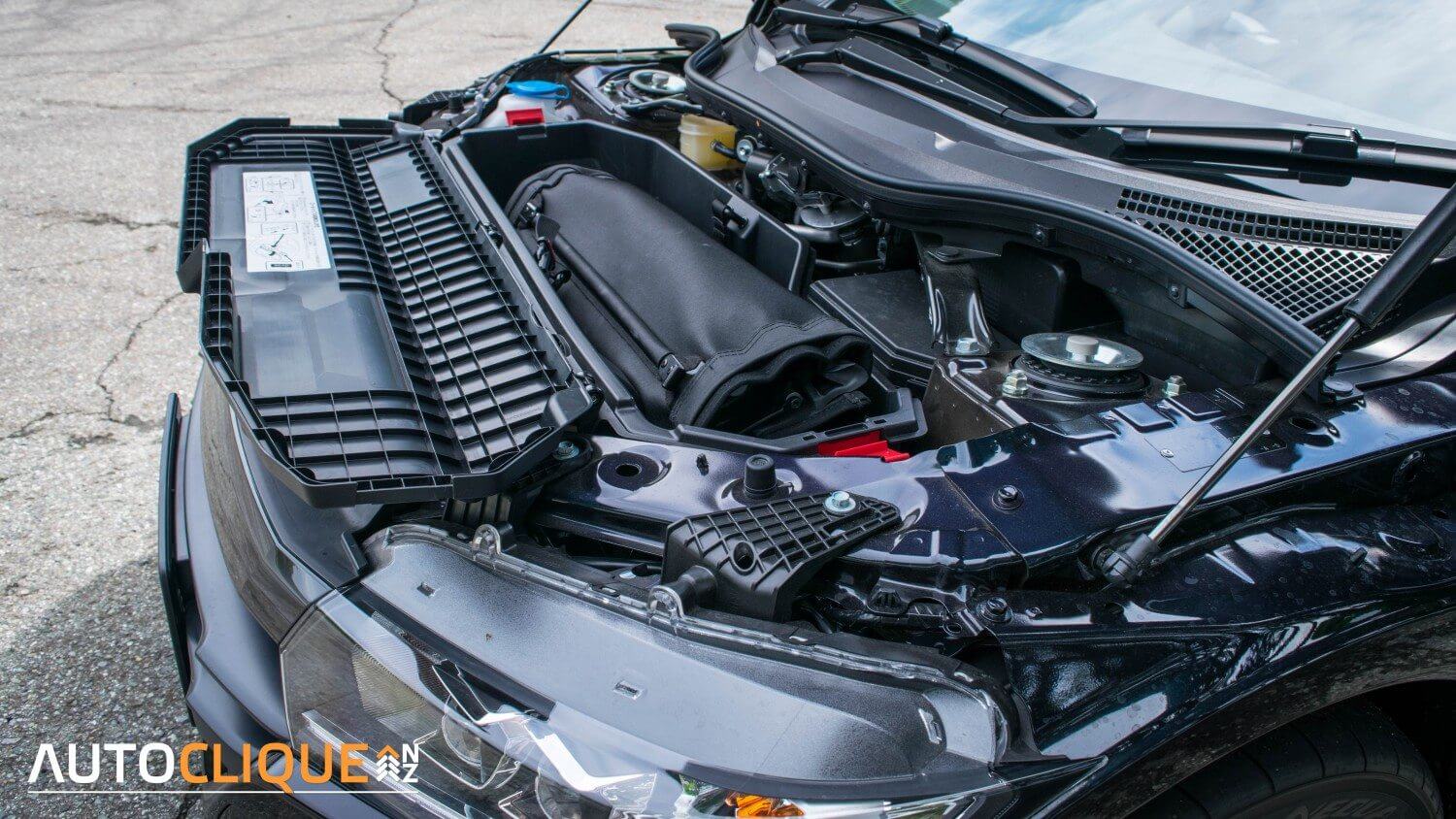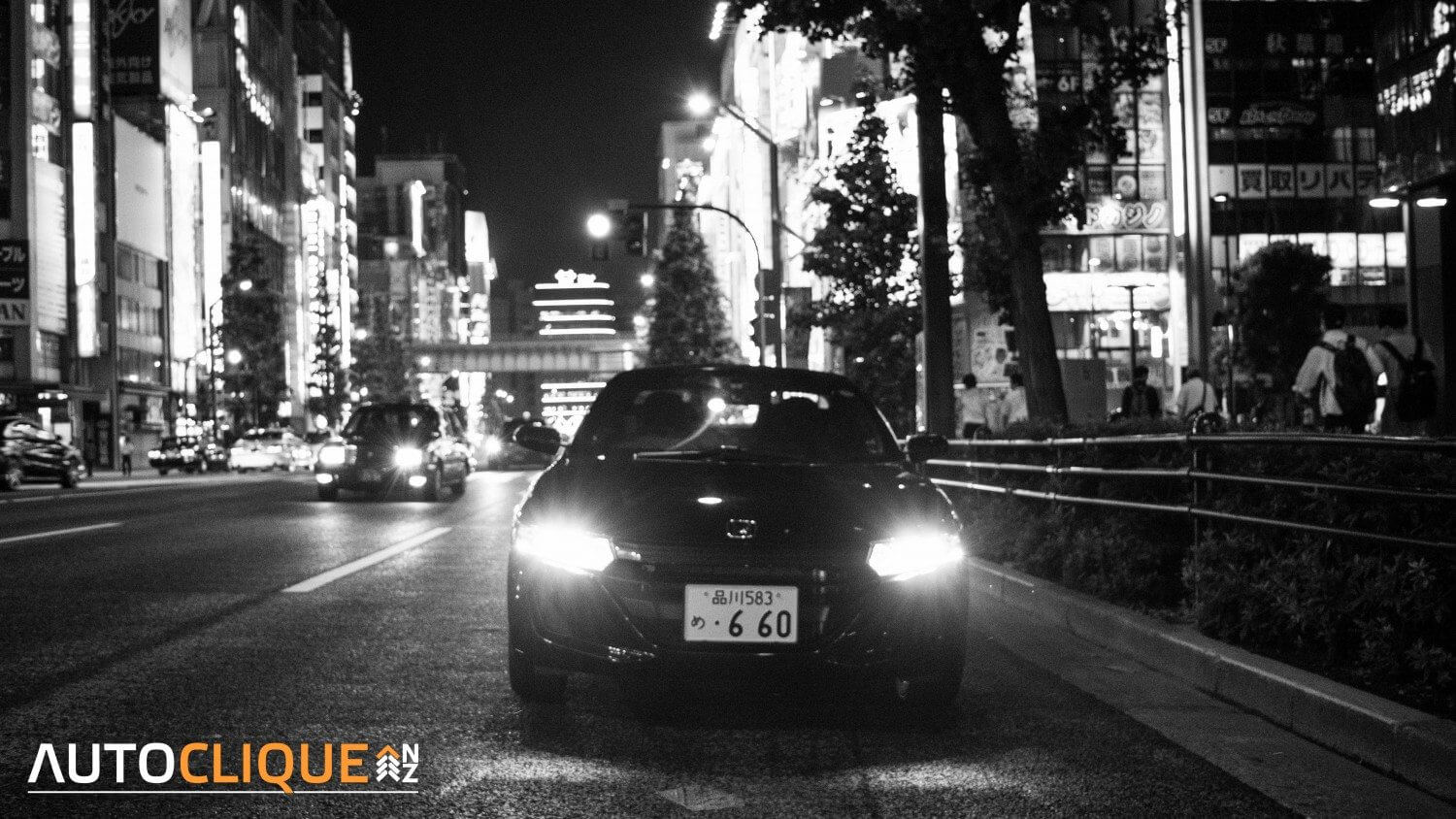Depending on where you are in the world, a pint is equivalent to 473ml or 568ml. Calling the Honda S660 a “pint sized sports car” would be factually incorrect because the engine is in fact 660cc. So I’ll refrain from calling it as such. Instead, think of Honda’s miniature sports car as the Ant Man version of Iron Man’s NSX from the Avengers film. A pocket-sized sports car could only come from the country that gave us pocket-sized music players, pocket-sized cameras, and Pocket Monsters.
The S660 is a return to the sports kei car segment for Honda, their last entry was the Beat which has since gone on to become a cult classic. Honda have a history in this segment as the company’s first car, the S500, was a kei sports car. The S500 was followed on by the S600 and S800, which kept the same basic principles of being small and simple.
For those who don’t know, kei cars are a type of regulated mini-cars in Japan. The busy bods in Japan’s bureaucratic government restrict the length (3395mm), width (1475mm), and engine size (660cc producing no more than 63bhp) for which all kei cars have to abide by. Everything else is a free for all.
Some of the more well known key cars such as the Suzuki Wagon R and Daihatsu Charade have awkward boxy shapes, which is great for interior space but the design leaves a lot to be desired. Generally speaking, kei cars are the definition of bare bones motoring – more something you need than want. In Japan, kei car buyers benefit from lower tax and insurance costs too. They’re the simplest interpretation of what a car is and make something like a Fiat 500 look like the QEII.
However, like a group of cheeky school kids, the designers and engineers at some of Japan’s car manufacturers have taken the kei car rules and bent them to create some fantastically weird, yet uniquely Japanese creations. Cars such as the Daihatsu Copen, Toyota Pixis Mega, and Suzuki Alto RS Turbo are some of the latest examples of the weird and wonderful kei car creations.
Honda had to go one better. They have their own “premium” kei car range such as the retro-styled N-One and the brilliantly named N-Box Slash. But with the S660, Honda have livened up what’s meant to be a simple and basic type of car. The idea of turning something that’s meant to be the essential bare bones motoring into a desirable two seater sports car is so paradoxical it’s a bit like having a lifeboat made of bricks. It was definitely worthy of further investigation.
The Design
Looking at the S660, you could be forgiven for thinking it was a NSX that was somewhere off in the distance. Given the dimensions Honda had to work with, the S660’s proportions certainly look right. Indeed, it’s a lot better resolved than the countless generic looking kei cars that’s on the market. I’d go as far as to say the S660 is easily one the best looking cars to come out of Japan in recent years. Here’s hoping this design will influence the rest of Honda’s range in the future.
The NSX-esque looks do favours for the S660 as it gives it a mini-exotic feel. I particularly like the buttresses behind the front seats which remind me of those on a McLaren 650S Spider and Ferrari 458 Spider. Adding to the “exotic” look were nice little styling touches such as a central exhaust, side air intakes, and a retractable rear spoiler. The standard-fit HID headlights with daytime running lights also draw attention to it.
And attention it draws. Even in base spec and in this solid black colour it managed to turn heads going down the ever-so-stylish Ginza district. There’s something about being in a open-top mid-engine sports car that just feels special, even if it is one that has a 660cc three-cylinder engine.
The Drive
That 660cc three-cylinder engine does come with a turbocharger which produces a total of 63bhp/47kW and 104NM of torque. That doesn’t sound like much but on Tokyo’s busy streets it felt adequate. Torque comes in at a nice 2600rpm so you get that push that you need to zip through a congested city. Peak power comes at 6000 rpm while the redline is at 7000. I got a childish joy from driving around the city at 7000rpm. Like other kei cars I’ve been in, you really have to work the little engine to make the most of the power it has.
That’s no bad thing as the S660 comes with a frankly brilliant 6-speed manual gearbox, related to those in Type-R cars no less The throws are short and give you a satisfying mechanical ‘click’. Driving a manual car in Tokyo might sound daft but the light clutch and joyous gear changes of the S660 made it more of a pleasure than a chore. You have to tip your hat to Honda who have given us a manual sports car in 2015, something the Europeans are moving away from.
Then there’s the noises it makes. No it’s not as operatic as a Ferrari V8 but it makes a good effort. Okay, other turbocharged cars also make various whining and swooshing noises as the turbos spool up but in the tiny S660 it’s even more smile-inducing. To save cost and weight, kei cars have minimal soundproofing. While this isn’t good for refinement, it is good for hearing the engine, and in turn the turbo. Having the engine placed behind you helps as well.
Every now and then, under acceleration, I’d hear the turbo whine and it reminded me of a cheerful bird chirping. It’s a happy little car and the wonderful noises from the turbo perfectly characterises the playful nature of the S660. A neat feature was the retractable rear windscreen, which when down, made the turbos sound even better from inside.
In the right gear and at the right revs it feels like you’re going 200 km/h, but you’re not because that’s physically impossible in a car with a top speed of 140 km/h. That said, the acceleration isn’t blistering but that’s not the point. If you’re after an out-and-out adrenaline rush that’ll get your heart racing, look elsewhere. But the S660 will give you a bigger smile than cars bigger and more expensive than it.
As the S660 weighs next to nothing, there’s no need to have a million horsepower to have fun in it. The steering was light and accurate. I wouldn’t go as far as to say it had steering by telekinesis, but it definitely was a point-and-dart sort of thing. There was good feedback through the wheel and virtually no understeer. The neutral handling gave you the confidence to push it to the limits around corners. You know exactly what’s going on at all times and there’s no unexpected movements. It always felt planted and had plenty of grip. I suppose with only 63bhp/47kW there’s not much chance of this getting its back out.
As strange as this’ll sound, the S660 felt most at home in the city. That’s not to say it doesn’t make for a fun mountain blaster, because it does. No, the S660 makes everyday driving fun and a surefire way of bringing a smile to your face even on rainy morning commutes. The low to mid-range boost of the turbocharged engine made it great for zipping around Tokyo’s infamous traffic. The light steering and great turning circle made manoeuvring through tight places easy.
It’s a responsive car, the throttle in particular. I don’t know if it was because of how light it was or because most Honda cars I’ve been in have this trait. The slightest input would give it all the encouragement to perk up. The brakes were, surprise surprise, also responsive with the pedal providing plenty of feel.
The guy in charge of the S660 project, Ryu Mukumoto, said in an interview with The Japan Times “racing karts are slow, maybe like 50 km/h to 60 km/h maximum. You can feel the wind, and the top speed may be low but there’s this great feeling each time you turn a corner”. You get the sense that Mukumoto-San is the sort of guy who has petrol running through his veins, and his passion shows through in the car he’s created. The car is only as good as the people who make it and the S660 has every bit of passion and soul as other mid-engine sports cars on the market.
Oddly enough, the S660 had great visibility too. The view out the front and side were acceptable while the wing mirrors were a good size. Actually, they’re worth mentioning because I liked their design. It’s not often you see an interesting looking wing mirror, maybe more designers should do this to make drivers use them. Anyway, visibility out the back was decent too despite having two buttresses behind you. Couple the good visibility with the easy manoeuvrability and you’d be right in thinking parking the S660 was effortless.
While it works in the city and blasting up and down a mountain road, it’s no motorway cruiser. I know it wasn’t designed to be one in the first place but it did feel like a fish out of water. For a start the minimal soundproofing, which is great for hearing the turbos, wasn’t so great when trying to listen to the radio or having a conversation at motorway speeds. Because of its size, driving next to buses and trucks seemed like like I was in Fury Road rather than Fast & Furious. Also, if you have the rear window down, you get a lot of heat from the engine coming into the cabin. That’d be fine in the winter, it’d be like a sort of Mercedes-style air scarf. In the summer though, it was a bit like driving around in a sauna.
The Interior
In a word; it’s basic. I don’t mean basic like a Neanderthal cave, but basic like a Neanderthal cave with two seats in it. There’s little in the way of high tech distractions we’ve become so used to in modern cars. There’s no infotainment screen (though this is an optional extra) and there aren’t a million electronic driver aids to adjust.
You do get a nice digital speedo that’s easy to read. All the controls and what few buttons there are are ergonomically placed. If ever there was a proper “driver focused” interior, this gets close to it.
The plastics weren’t bad, but they’re not on the same level as other Hondas. But then why expect it to be in the first place? This is a kei car remember so people aren’t really bothered that it doesn’t have soft touch plastics or leather inserts on the door panels.
The roof is a manual job. Anyone familiar with an Elise should be able to do the operation no problem. It took about a minute, which is longer than electric systems but putting the roof on yourself adds to the man-and-machine experience.
Luggage space is virtually non existent. The low slung driving position was good. However, the seat doesn’t go down low enough for taller people to get comfortable. I’m 5’10” and only just managed to fit inside with the roof on. Occasionally I’d bump the roof but it wasn’t a big deal. With the roof off my hair got caught in the wind, at times giving the impression I was in a 63bhp hair dryer. Other than that though, there’s little in terms of buffeting in the cabin. Maybe I just need a haircut.
In terms of comfort, well again it’s not a long distance grand tourer but on the two and a half hour journey from Tokyo to Hakone, my back never ached and I never once broke my bottom going over a speed bump. It’s far from being the most refined car in the world with thin panels to keep cost and weight down.
What it’s up against
| Brand/Model | Engine | Power | Fuel L/100km | CO2 g/100km | 0-100 km/h | Price – High to Low |
| Mazda MX-5 | 1.5-litre, four-cylinder petrol | 129bhp/96kW | 6.0L/100km | 139 C02g/km | 8.3 sec | $35,000 (est.) |
| Honda S660 | 660cc, three-cylinder turbo petrol | 63bhp/47kW | 4.7L/100km | 109.5 CO2g/km | 10.3 sec |
¥1,980,000 (approx. $24,012) |
| Daihatsu Copen | 660cc, three-cylinder turbo petrol | 63bhp/47kW | 4.5L/100km | 105 CO2g/km | 10+ sec | ¥1,798,200 (approx. $21,815) |
| Pros | Cons |
| More fun than a lot of regular sized cars | Far from being a motorway cruiser |
| Most stylish Honda for a long time | Lack of practicality |
| Great fuel economy for a sports car | Not available in NZ.. Yet |
| Ease of use |
What do we think?
Honda is back in good sporting form. The S660 is the first of what seems to be a smorgasbord of new sporty cars from Honda. There’s no denying they’ve had a sports car drought for many years but with the upcoming Civic Type-R and NSX getting petrolhead around the world all hot at the collar, things look promising. If the S660 is anything to go by, it does appear that Honda have found the magic for their sports cars. In many ways the S660 reminds me of the original MX-5. Light, simple, and oodles of fun without setting your pants on fire. It is simply, pure unadulterated sports car magic.
With its small dimensions, nippy and responsive handling, and punchy engine, the S660 seems ideal for the roads of New Zealand’s cities. As of yet though, it’s only a Japan market car, though some will surely pop up on the import market. A shame as I believe the S660, or perhaps even an S1000, would easily find homes around the world. Imagine that, a small mid-engine rear wheel drive sports car with no direct rivals. Crucially though, the S660 has something Honda and most of the Japanese auto industry have forgotten lately; fun. So come on Honda, let the rest of the world enjoy this fabulous little sports car. It’s about time your reputation got a VTEC boost.
| Vehicle Type |
Kei Sports Car |
| Starting Price |
¥1,980,000 (approx. $24,012) |
| Tested Price |
¥2,138,400 (approx. $25,942) |
| Engine |
660cc three-cylinder DOHC turbocharged |
| Transmission |
6-speed manual |
| 0-100 kph |
10.2 seconds |
| Kerb Weight |
830kg |
| Length x Width x Height |
3395mm x 1475mm x 1180mm |
| Cargo Capacity |
N/A |
| Fuel Tank |
25L |
| ANCAP Safety Ratings |
N/A |


